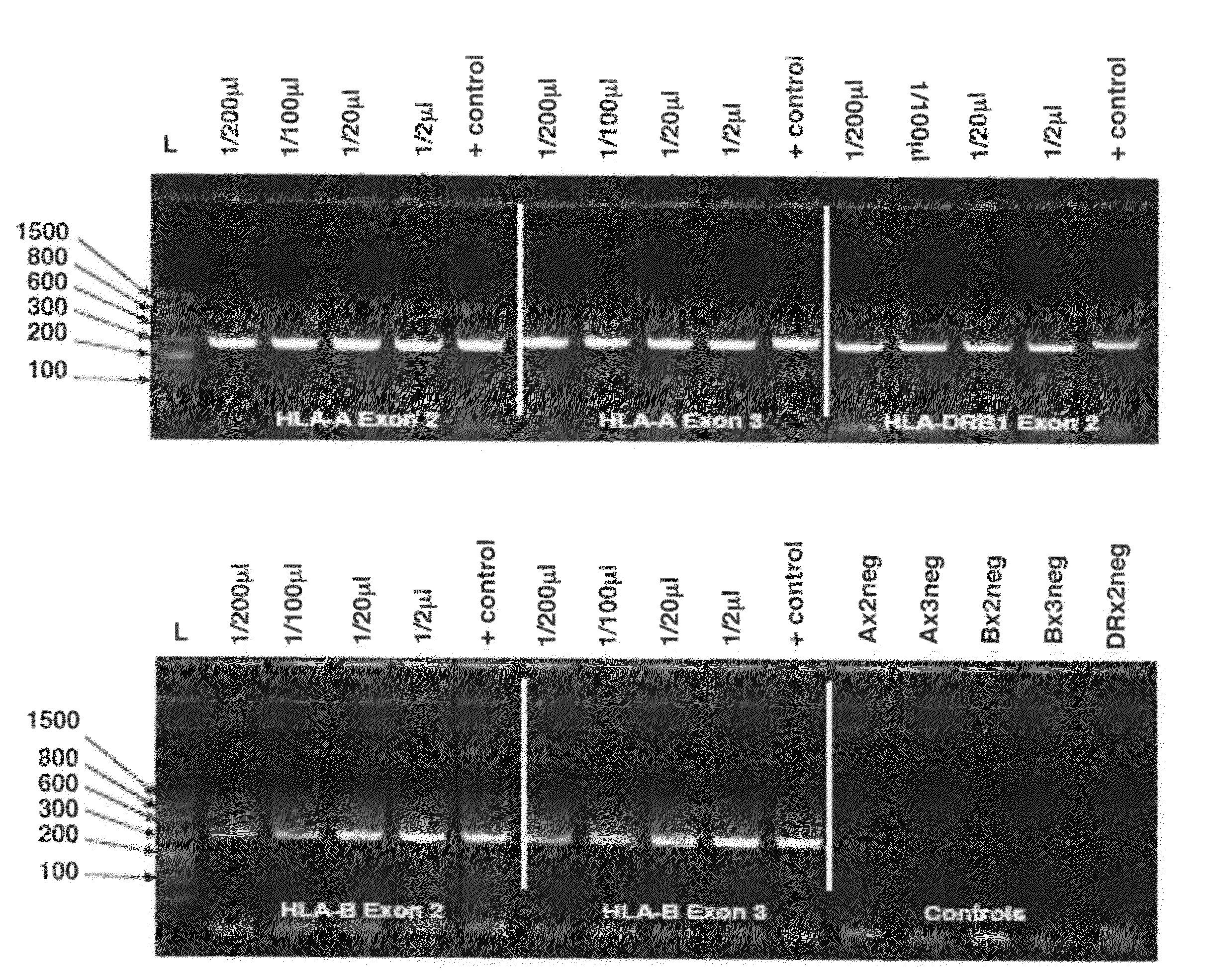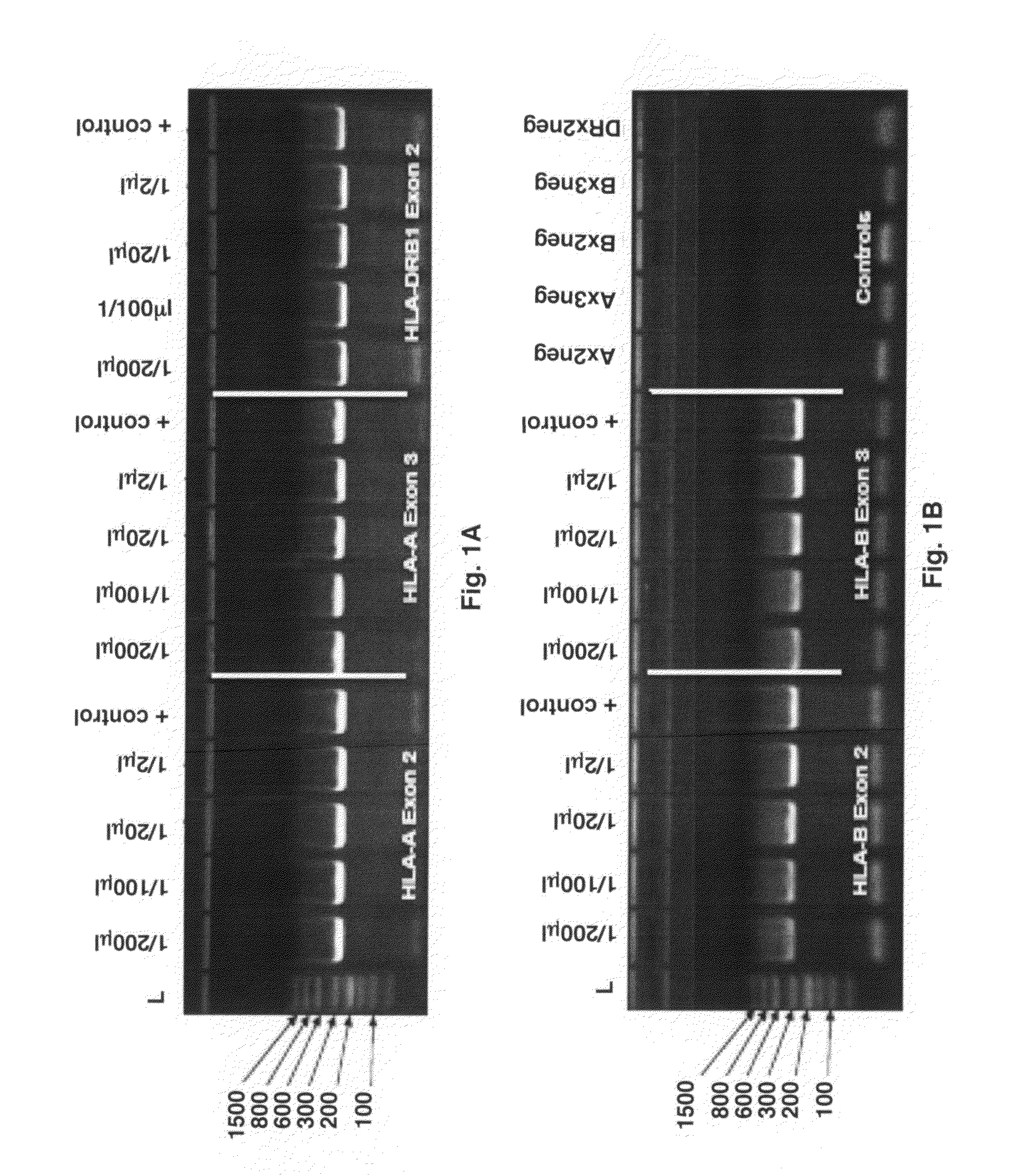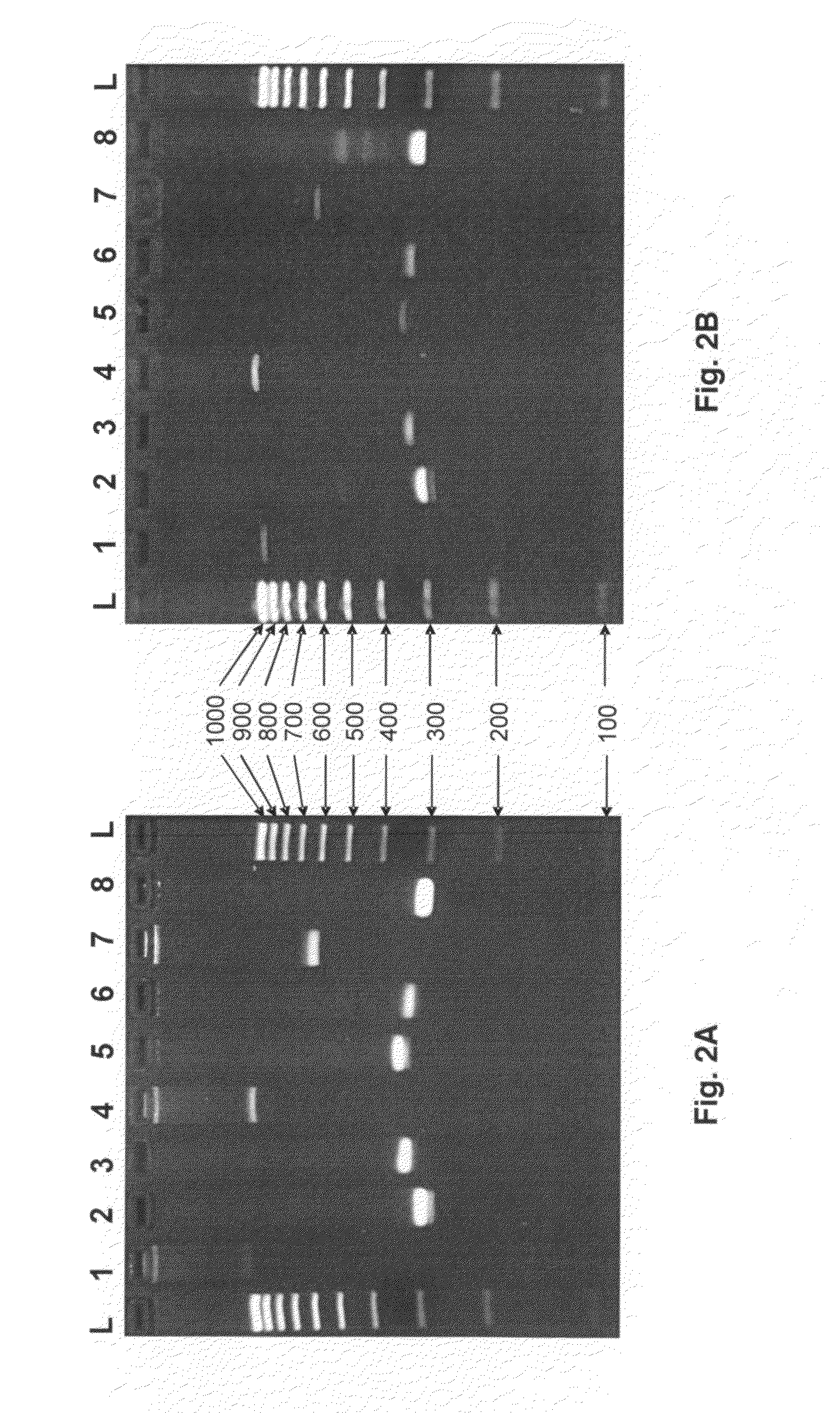Methods for PCR and HLA typing using raw blood
a technology of raw blood and typing method, applied in the field of pcr and hla typing, can solve the problems of complex standard workflow, hla typing literally requires the effort of an entire molecular genetics laboratory, and achieves high resolution and high level of agreemen
- Summary
- Abstract
- Description
- Claims
- Application Information
AI Technical Summary
Benefits of technology
Problems solved by technology
Method used
Image
Examples
example 1
Tandem PCR Yields Constant 2° Product Over Wide 1° Input Amounts
[0060]2 μl of raw blood was used as the template for the primary, locus-specific HLA PCR reactions required for HLA-Chip analysis. Amplification was performed via the Finnzymes Phusion® Blood Direct kit. Different amounts of that primary, locus specific PCR product were then diluted in H2O and used as template for the secondary, self limiting, exon-specific PCR reactions. One microliter of each of the resulting 2° PCR reaction product was then loaded onto a standard acrylamide gel. HLA-A exons 2 and 3 and HLA-DRB1 exon 2 (FIG. 1A) and HLA-B exons 2 and 3 (FIG. 1B) were visualized by Amresco EZ-Vision DNA Dye. Positive controls on the gel refer to the product of the same tandem HLA PCR reactions, but instead using 10 ng of highly-purified Roche DNA as the original sample input. As seen, the amount of final 2° amplicon obtained from 2 μl of raw blood, is nearly independent of the amount of 1° amplicon used in the reaction...
example 2
Generation of HLA Locus-Specific Amplicons
[0061]HLA locus-specific amplicons are generated from 2 μl whole fluid blood (FIG. 2A) via the PCR reaction using the Phusion Blood Direct® kit commercially available from Finnzymes (Woburn, Mass.). Reaction conditions are as follows: 1× Phusion® Blood PCR Buffer, 0.8 μl Phusion® Blood DNA Polymerase, 1.75 mM EDTA, 400 nM each primer in a 20 μl reaction volume. Reactions are cycled using the following protocol: initial denaturing at 98° C. for 5 minutes followed by 35 cycles of i) denature at 98° C. for 5 seconds, ii) anneal at 70° C. for 5 seconds, and iii) extend at 72° C. for 30 seconds, and one final extension at 72° C. for 1 minute.
[0062]When amplifying HLA loci from purified DNA (FIG. 2B), 10 ng of genomic DNA is used as template for PCR using Roche (Basel, Switzerland) FastStart Taq DNA Polymerase under the following conditions: 1×PCR Buffer (without Mg++), 1.5 mM MgCl2, 0.16 mg / ml BSA (fraction V), 0.05 μM each dNTP, 400 nM each prim...
example 3
Lab-on-a-Chip Microarray Platform
[0071]The LoC microarray platform (In-Check™) system integrates PCR amplification and microarray detection processes for genetic testing in a single lab-on-a-chip. The system is designed for identification of complex nucleic-acid analytes, such as in HLA-typing, by integrating PCR amplification and hybridization on a single low-density microarray. The system is based on a technology that monolithically integrates a PCR micro-reactor fluidically connected with a hybridization reactor composed of a low-density microarray on a miniaturized silicon lab-on-chip (LoC).
PCR Module
[0072]The PCR module (In-Check™) has integrated silicon heaters, temperature sensor and miniaturized 25 μl volume which allow the PCR module to perform the rapid heating and cooling cycles required for highly reliable, end-point PCR. The PCR module is thermally driven by the temperature control system (TCS; In-Check™). The TCS allows fast and programmable temperature cycling in a wa...
PUM
| Property | Measurement | Unit |
|---|---|---|
| volume | aaaaa | aaaaa |
| volume | aaaaa | aaaaa |
| mass yield | aaaaa | aaaaa |
Abstract
Description
Claims
Application Information
 Login to View More
Login to View More - R&D
- Intellectual Property
- Life Sciences
- Materials
- Tech Scout
- Unparalleled Data Quality
- Higher Quality Content
- 60% Fewer Hallucinations
Browse by: Latest US Patents, China's latest patents, Technical Efficacy Thesaurus, Application Domain, Technology Topic, Popular Technical Reports.
© 2025 PatSnap. All rights reserved.Legal|Privacy policy|Modern Slavery Act Transparency Statement|Sitemap|About US| Contact US: help@patsnap.com



